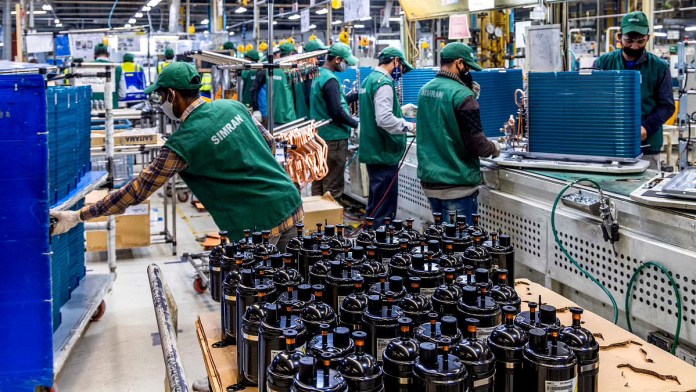The country’s Gross Domestic Product (GDP) grew 6.3% in the second quarter (July-September) which, while being higher than most of the estimates, saw the contribution of the manufacturing sector shrink. Analysts say the contraction was due to high input costs, which put a burden on production.
“Low growth for the SME sector (as per IIP) and fall in profits clearly affected the manufacturing sector, which in turn impacted the value added to the organised sector,” Madan Sabnavis, Chief Economist, Bank of Baroda said.
Some pointed out that estimates for the agricultural sector are seen as optimistic. “…GVA growth in agriculture, forestry and fishing has been estimated at above 4% for the third consecutive quarter, which seems somewhat optimistic based on the decidedly mixed first advance estimates of the kharif crop, that were followed by unseasonal heavy rainfall towards the end of the monsoon season,” Aditi Nayar, the chief economist at ICRA, said.
GVA or gross value added is net product taxes subtracted from the GDP.
The merchandise export growth is also not expected to sustain in the coming quarters along with a moderation in government expenditure. “…the same has started becoming visible in the monthly data. GFCE contracted by 4.4% in 2QFY23 as governments have been showing retrain and have also rolled back some of the Covid-19 pandemic-related expenditure,” Sunil Kumar Sinha, Principal Economist, India Ratings said.
“Second-quarter GVA (gross value added) growth expectedly slowed at 5.6%, led by growth in the services sector while manufacturing was a big drag,” Madhavi Arora, the lead economist at Emkay Global Financial Services, Mumbai, said, “Going ahead, even as recovery in domestic economic activity is yet to become broad-based, protracted global drags, shrinking corporate profitability, demand-curbing monetary policies and diminishing global growth prospects weigh on output.”
“GDP data has lagged behind the IIP manufacturing data. One of the reasons is because of high input costs, companies’ margins are under pressure in the manufacturing sector and that has reflected in the weak GDP number,” said A Prasanna, the head of fixed income research at ICICI Securities.
“Industrial output contracted by 0.8% in Q2 FY23 on a y-o-y basis compared with a growth of 7% a year ago. This was mainly because of the poor performance by the manufacturing sector which has been marred by high input costs,” said Chief Economist at Care Edge Rajani Sinha.
Recovery is expected by the analysts in the coming quarters. “The margins should start improving, as globally commodities prices have come down from their high. If we look at Wholesale Price Index (WPI) and Producer Price Index (PPI) inflation numbers, inflation seems to have peaked out in many countries. Thus, GDP manufacturing should start improving,” said Prasanna.
“We can expect the sector to fare well in coming quarters due to festive push and easing of commodity prices,” said Sinha.
Taking the global scenario into consideration, analysts predict that the manufacturing segment can see a slow down.
“Global demand is slowing down so that will be a headwind for manufacturing exports and output,” said Prasanna.
A report by stock broking firm, Smifs Limited, said that they see signs of strength in services, but expect manufacturing and exports to slow in coming months.





You must log in to post a comment.